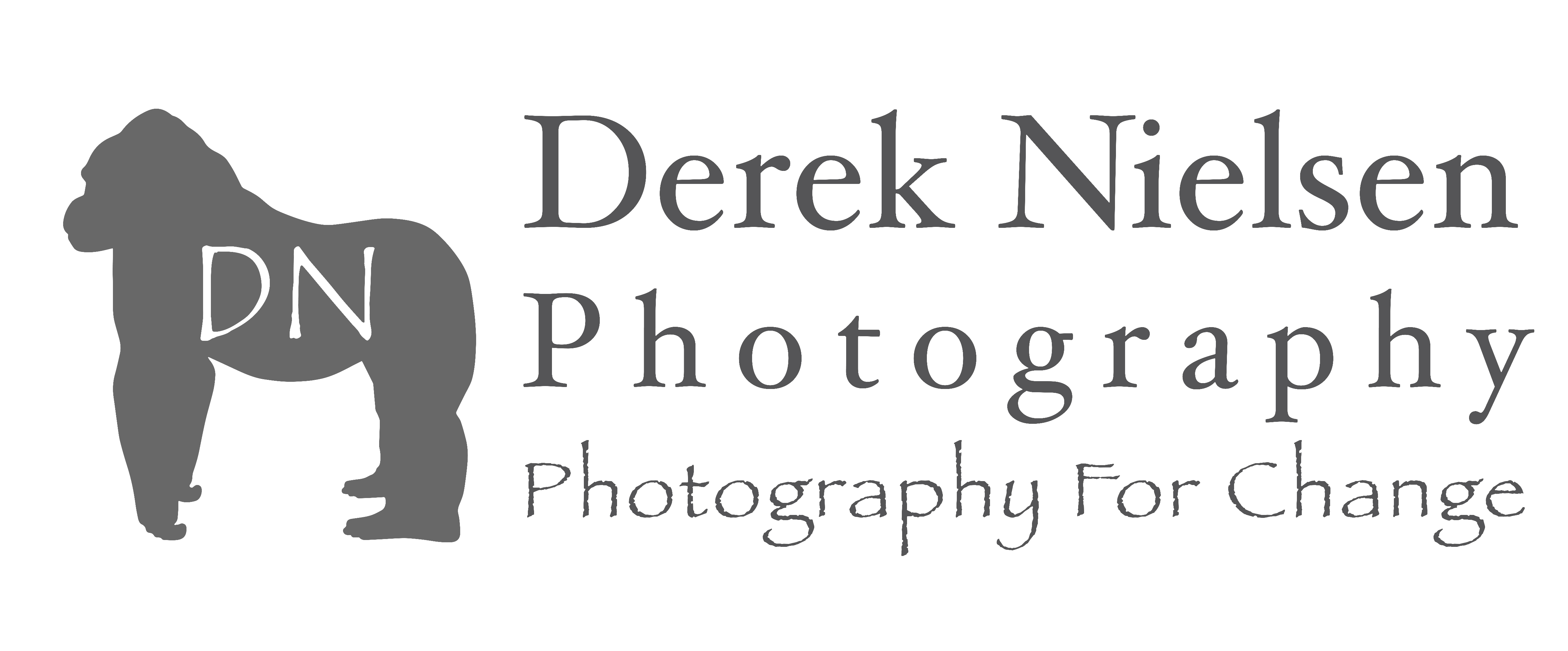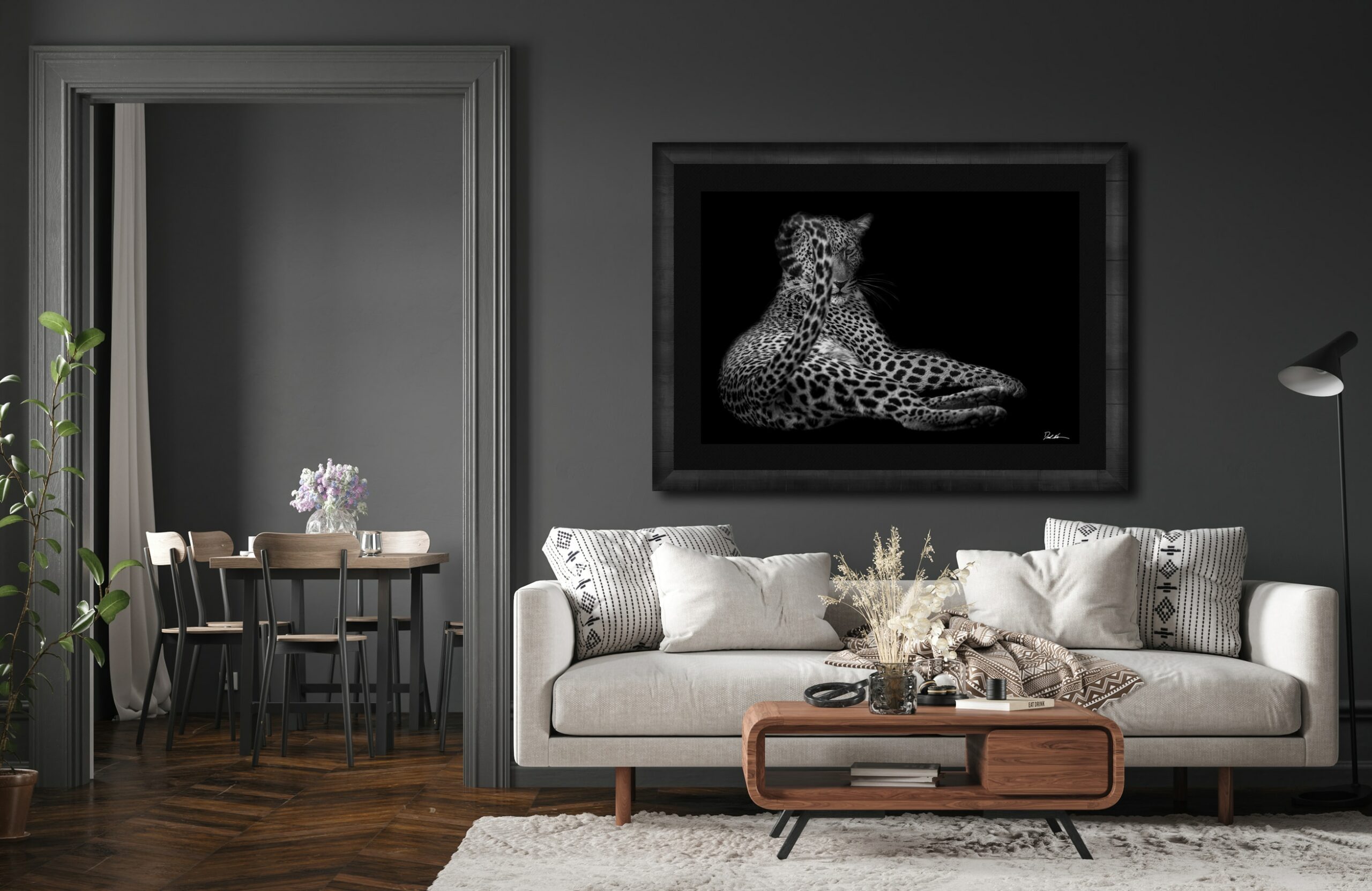
Black and white wildlife photography is powerful and raw. Taking away the distractions of color and letting the texture of the animal shine opens a new world to viewing wildlife. Black and white photography puts extra attention on the details. This style of photography appeals to the fine art photography market, conveying a timeless luxury. Black and white images leave a lasting impression. I want to share with you a professional photographer’s guide to capturing beautiful black-and-white photos of wildlife.
Composition of black and white wildlife photos.
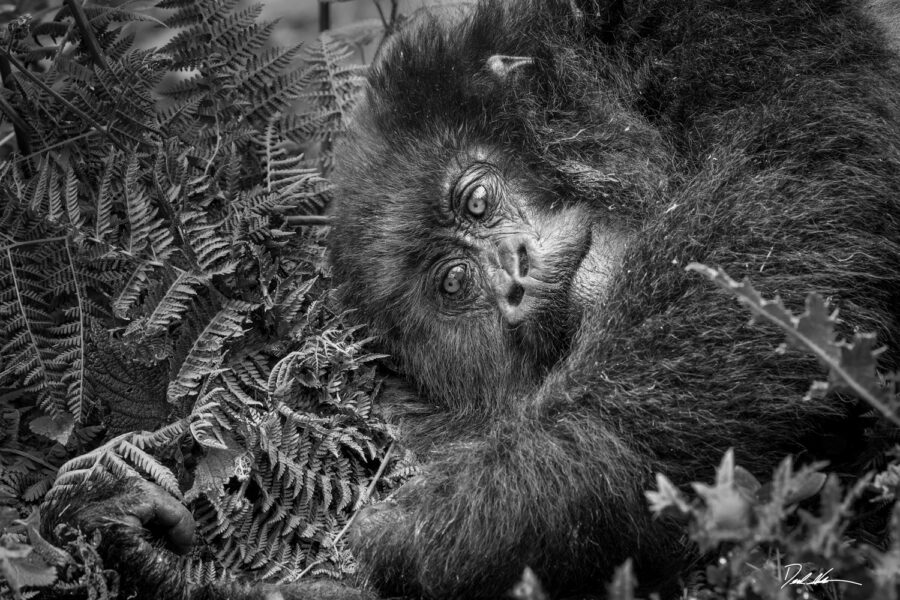
As in color photography, composition is equally important in black and white photography. To be honest, potentially even more. Color has a way of distracting the eye where, as black and white rely on contrasting light and dark tones. An emphasis on artistic guidelines like the Rule of Thirds, The Golden Ratio, or our use of negative space is a good starting point. Contrast and texture are king in black-and-white wildlife photography. Look for elements that highlight your subject well. A strong composition will lead your viewer in and around your image and the key elements.
Finding the right subject for black-and-white wildlife photography.
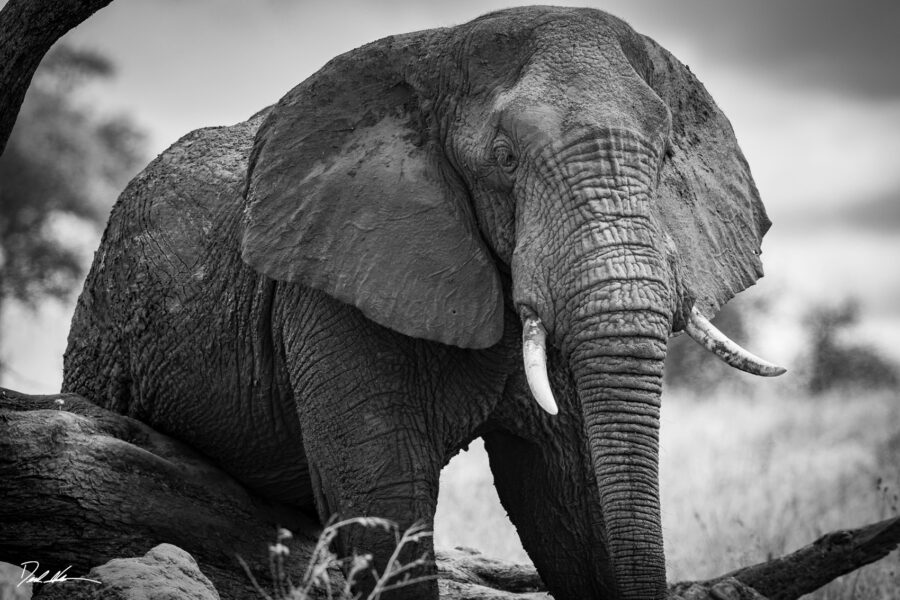
Some animals photograph incredibly well in black and white, while others do not. Take an African elephant, for example; photographing elephants in black and white is very powerful because of the complex detail found in elephants’ skin. An animal like an all-white egret will be more challenging to pull out strong contrasting features. Wildlife subjects associated with luxury are great for black and white animal photography. These include majestic creatures like lions, leopards, horses, elephants, and wolves.
What is the best time of day for black-and-white photography?
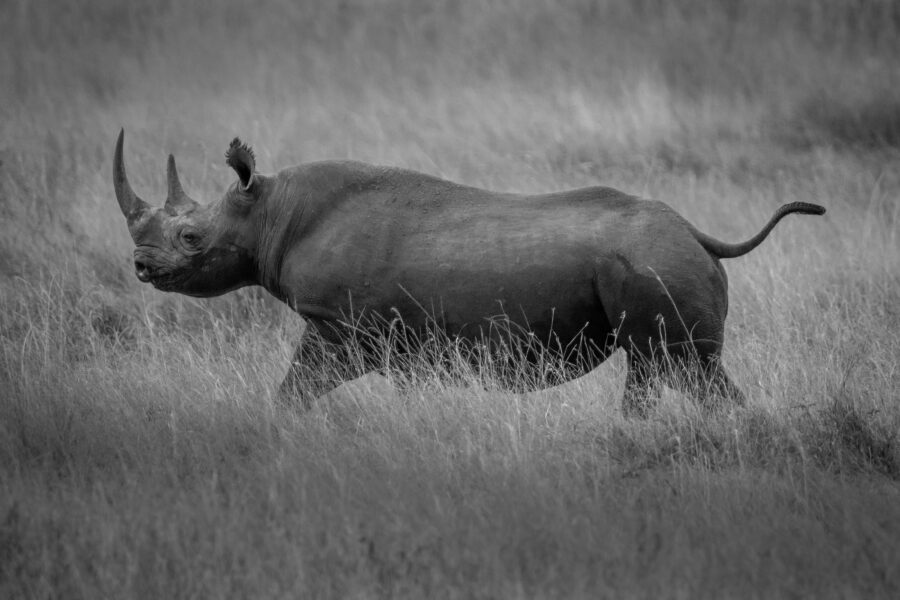
My brain always switches to black and white when harsh light conditions hit between 10 am and 4 pm. Because of the position of the sun in the sky, colors get washed out. However, these harsh lighting conditions cause extremes between light and dark spaces, which I find ideal for blacks and whites. That being said, the same dramatic light found during sunrise and sunset is worth exploring—more on that in the next section.
Finding the best light for your subjects.
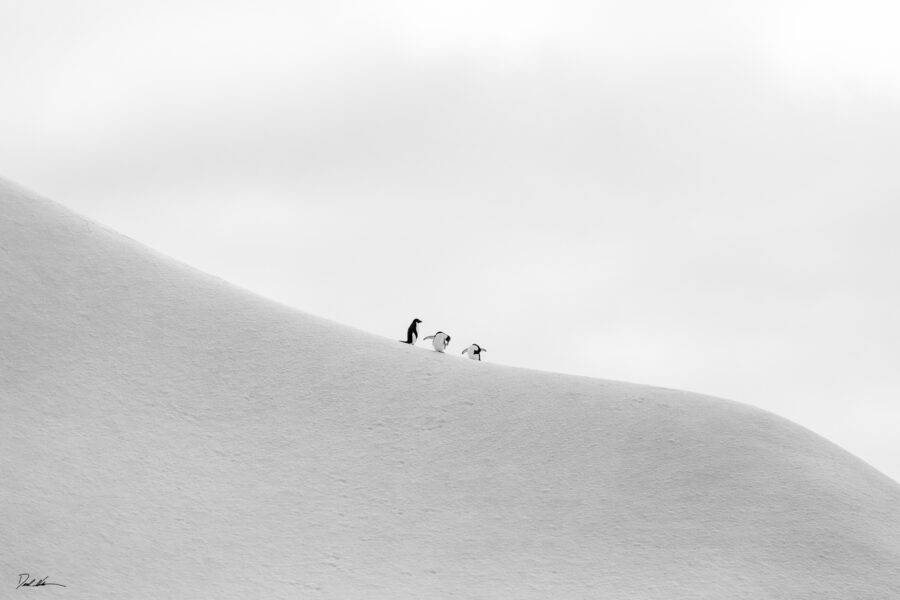
I prefer to let nature dictate the lighting. External flashes may disturb the wildlife. When working with wild animals, your safety should always be considered before any photograph is taken. Some don’t mind a flash, so you should do your research on your subject before pulling out an external flash. As I mentioned earlier, mid-day is a great time to shoot black and white, but the long, dramatic shadows of sunrise and sunset may give you the best results. Look for days with partial cloud cover. They produce the best light rays and overall texture to the sky portion of a composition.
Converting color photos to black and white.
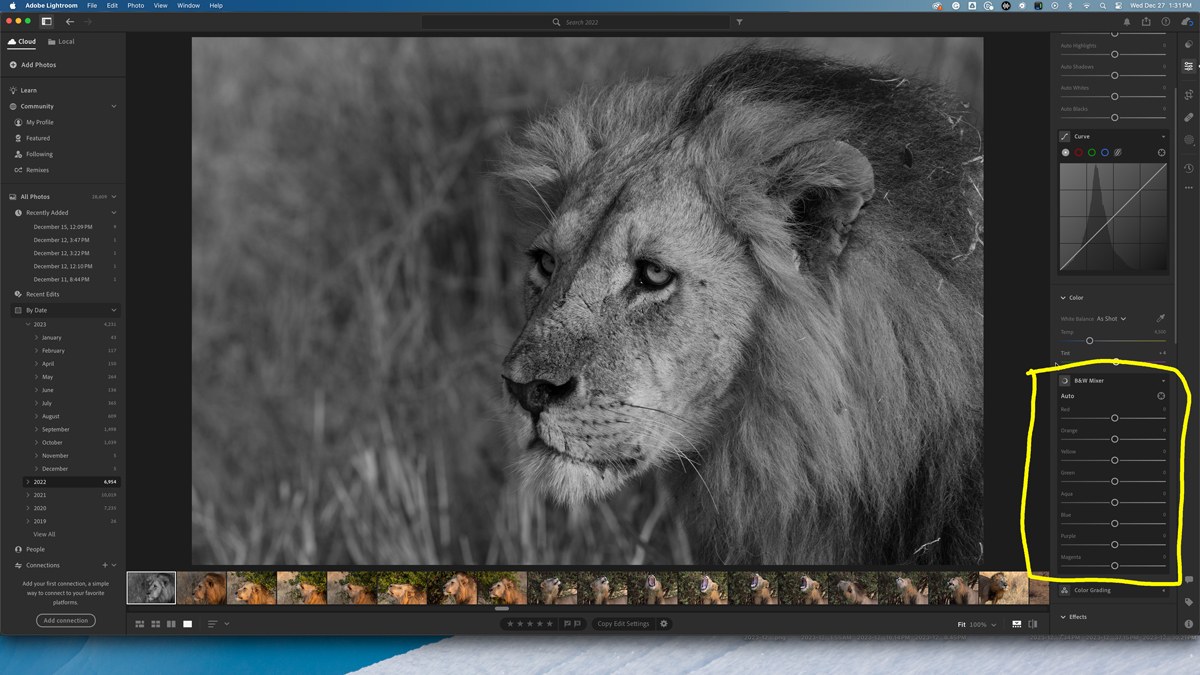
An old photography mentor told me never to shoot in-camera black and white because it is nearly impossible to add color in post-production. However, converting a color image to black and white has many options. Adobe Lightroom is my preferred method of converting the original image to black and white. With one click on the B&W tab found in the top right, the color is removed from the image. Then, the artist has the ability to adjust various sliders in the B&W mixer that automatically pops up after the conversion.
Depending on the color image, adjusting each “color” slider will adjust certain tones inside the image. In the photograph above of the lion, the two sliders that made the most difference were yellow and orange because most of the scene had those two colors in it. More complex colored scenes may require you to use all the sliders in that box. My next adjustments are made to the overall image using the black, white, shadows, highlights, and contrast found in the light box at the top of the editing menu.
Using on-camera filters for black-and-white wildlife photography?
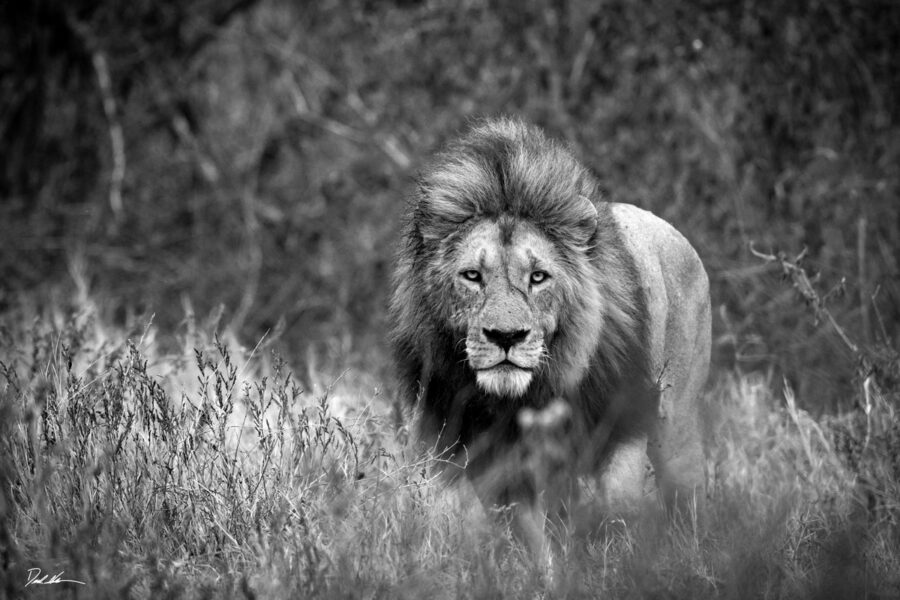
The number one filter found on any of my lenses is a circular polarizing filter. These filters are great at reducing atmospheric haze, which can make your image seem soft. Circular polarizers also reduce reflections on water, take the shine off of leaves, and reduce glare on animal fur and feathers. One nice thing is you can adjust the strength of how much the filter affects the image.
Other filters to consider when shooting for black and white.
Red filter – The most dramatic of color filters. Red filters create a nearly black sky on a blue sky day while making the clouds appear extra white. Used when looking for intense contrasts. Red filters cut through the haze. It is often used in portrait or urban photography to give a weathered or gritty feel to the subject.
Yellow filter – One of the most common filters used in black and white photography. They give the image a subtle correction towards heavier contrast but not as dramatic as red.
Green filter – Often used by landscape photographers to create dimension to their work. Green filters cut out a large portion of the green spectrum, leaving more contrasting tones to pass to the sensor. They are a great option for taking environmental portrait-style wildlife images.
Using RAW files for monochrome photography
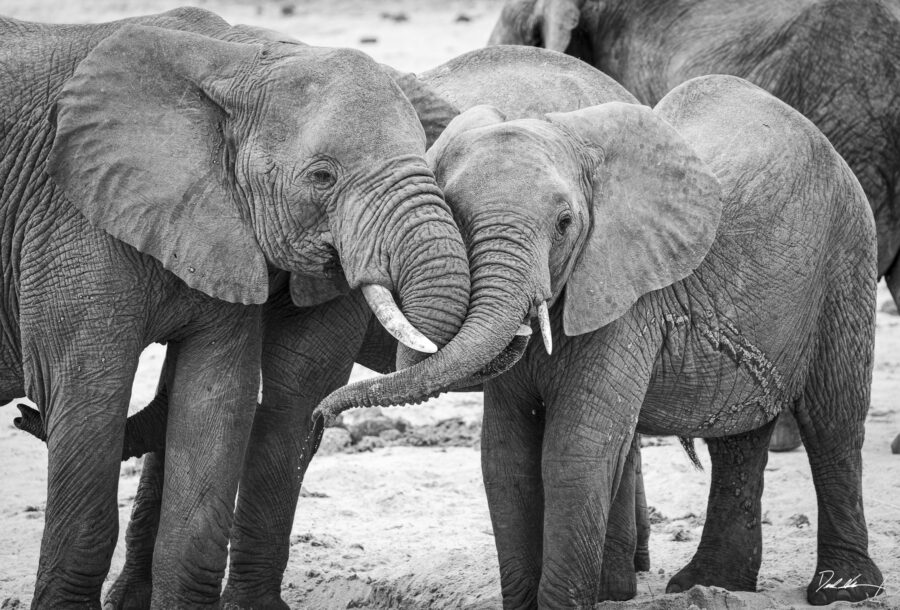
The attention is in the details. RAW files contain so much more detail than jpeg files. This is important when looking to make fine adjustments to shadows and highlights. RAW images also allow for greater flexibility when it comes to cropping. Cropping is an important tool any photographer should keep in their photography tool kit. For example, photographing a baby elephant in the wild without a telephoto lens can be very dangerous. Getting too close to a protective mother is never a good idea. However, shooting high-quality images with a powerful camera and then cropping in allows the photographer to achieve the desired final outcome while keeping everyone safe.
Photographing wildlife with a black background.
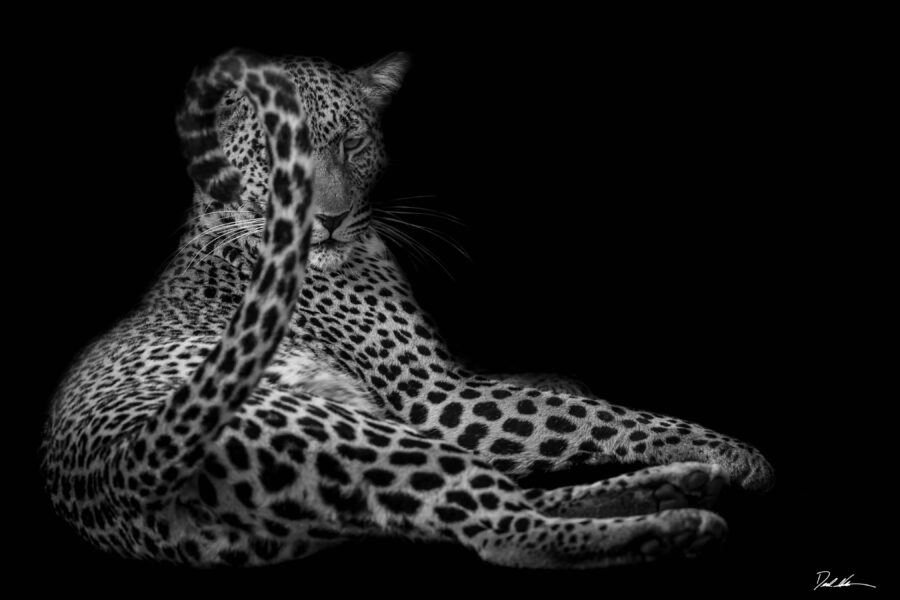
An interesting technique to celebrate the beauty of the wild animal subject further is to isolate it against a black background. The easiest way is to use a photo editing software like Photoshop to select the subject and then isolate it against the rest of the image, as I have done in this black and white image of a leopard. Other more challenging but not impossible in-camera techniques are used for wildlife photographs. This list shows how to achieve beautiful contrast while working in the field.
- Find areas of high contrast, like a brightly lit branch against a shadowy mountain, when photographing birds.
- Use spot metering in your camera to get the correct exposure on your subject.
- Make sure there is adequate distance between your subject and the background.
- Use negative exposure with the in-camera exposure dial to darken the image around a well-lit subject.
Creating black and white fine art prints of wildlife.
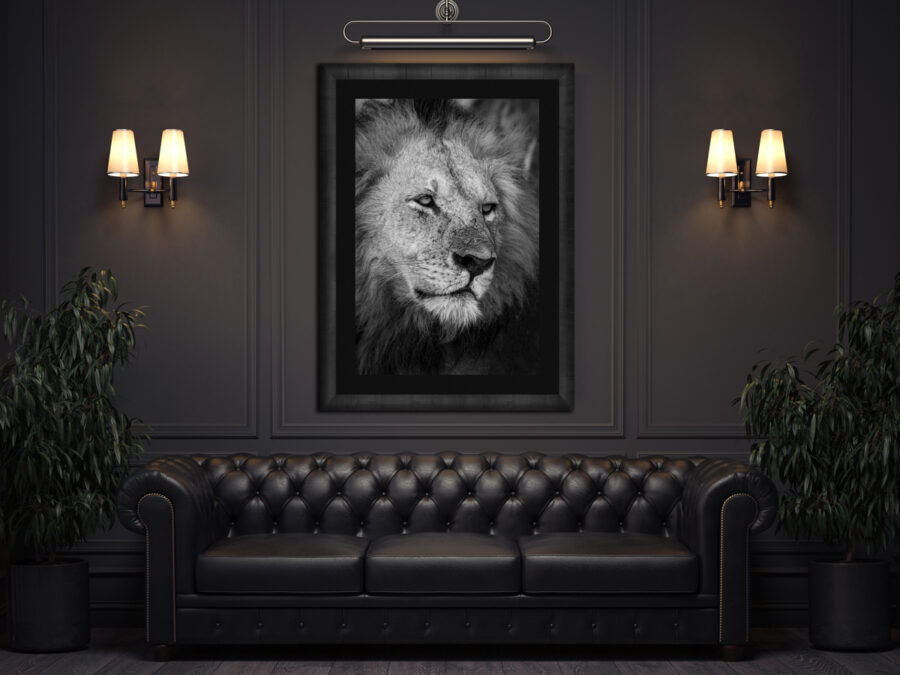
As a fine art nature and wildlife photographer, I always look for the best ways to print my art for my collectors. Limited edition prints should carry a certain value to them besides the image itself. I believe all fine art photographs, including black and white fine art photographs, should be printed on the best material available. Print Lab in Chicago is who I trust with my black and white paper prints. Hear what they have to say, “If you have a high-resolution image with great tonality, our Piezography High-Definition Black-and-White system offers the highest quality prints available on the planet. Using ten different shades of black, this printing system is able to render shadows, highlights, and everything in-between with a subtlety and fidelity that has never been possible before.” That level of commitment is exactly what you should look for when deciding who to print your black and white prints with. Treat your printing with the same level of commitment you treat your photography with.
Black and white wildlife photography for interior design.
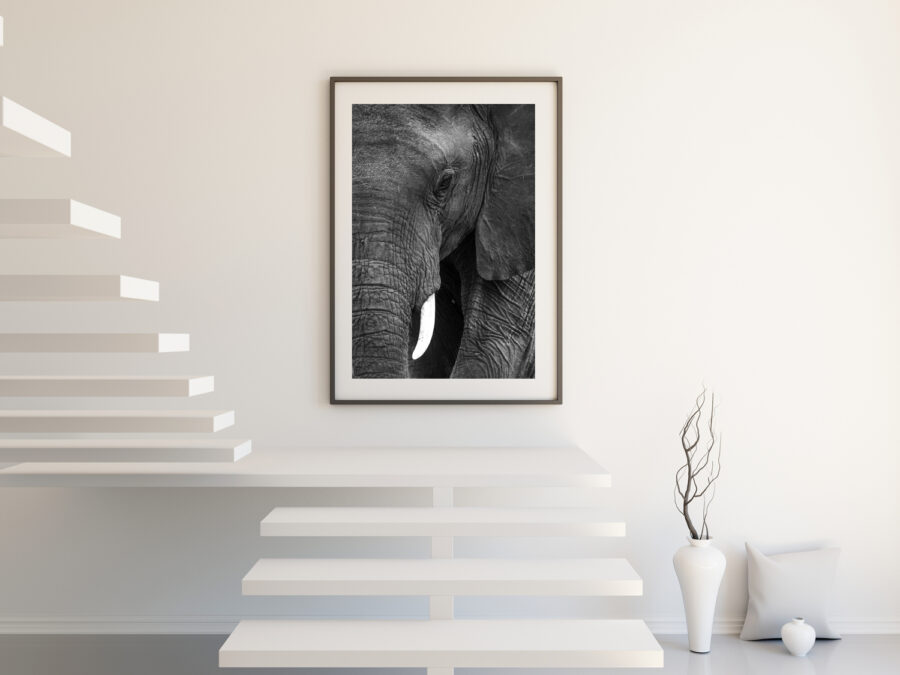
Interior design’s use of an old photo of a celebrity in black and white or black and white animal prints fits almost any decor. From swanky speakeasy parlors to adorable children’s room ideas, black and white wildlife subjects check so many boxes. On one hand, they can emit a feeling of power or luxury while, on the other hand, they show delicate sensitivity in its purest form. Bright or saturated colors in a piece of art can clash with the rest of the design, while black and white can go with almost anything. For this reason, hotels, apartment buildings, and restaurants choose black and white images for their common spaces.
Black and white animal portraits.
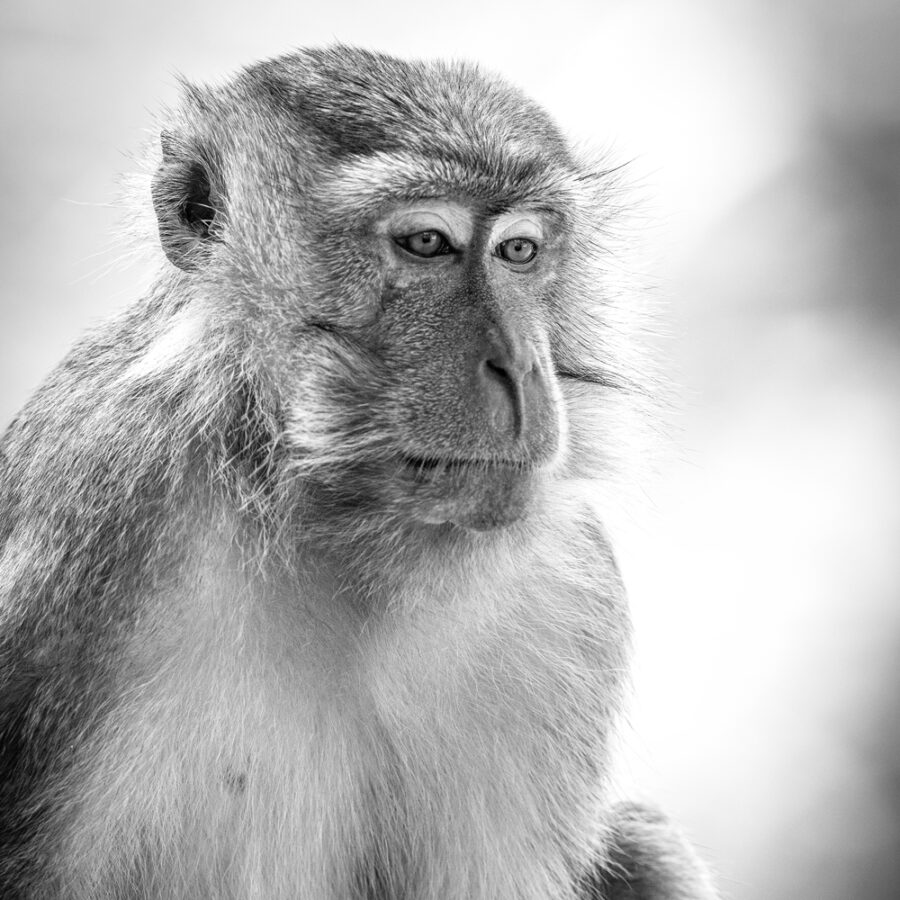
With black and white the natural beauty of the animal becomes the focal point in the absence of color. Facial expressions are perfect to capture with black and white pictures. Fine art black and white wildlife photographers use the lack of color to highlight the animals dominate facial features. Wildlife enthusiasts favor animal portraists for their living space bringing a timeless elegance to their home decor.
Start seeing the world in black and white.
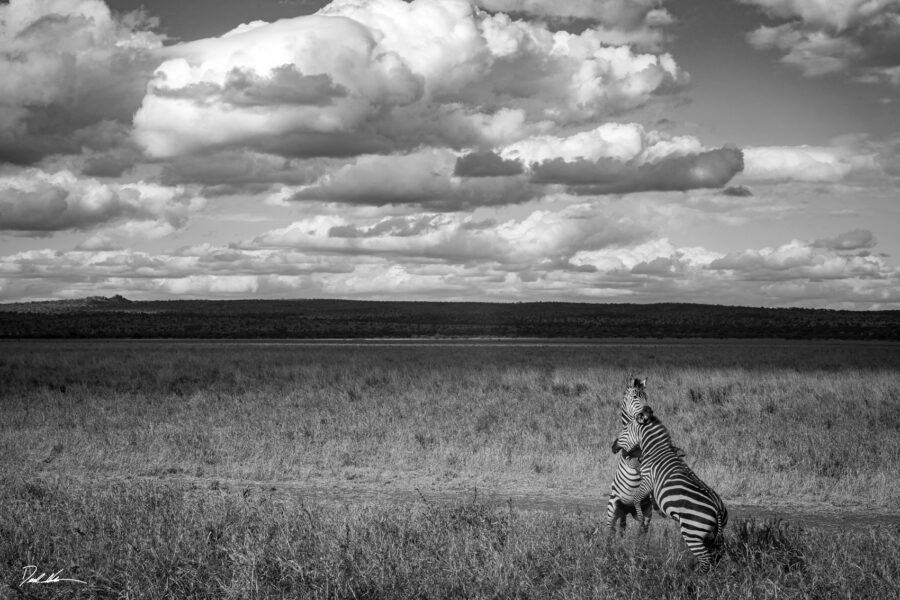
While the majority of us in our daily lives see the world in color, thinking in the way of monochrome conversions during the less ideal times to shoot photography will lead to a greater number of opportunities to bring home better images. Monochrome images resonate with a large audience. Stark contrasts elicit emotions of excitement or energy. Use this to your advantage when lighting conditions become too harsh for color photography. Great photography doesn’t disappear between sunrise and sunset. Shift your focus, adjust your creative eye, and find beauty in black and white photography. Remember, shoot in color and convert to black and white. The wildlife on this planet is loaded with exquisite detail. Use black and white wildlife photography to pull out those details.
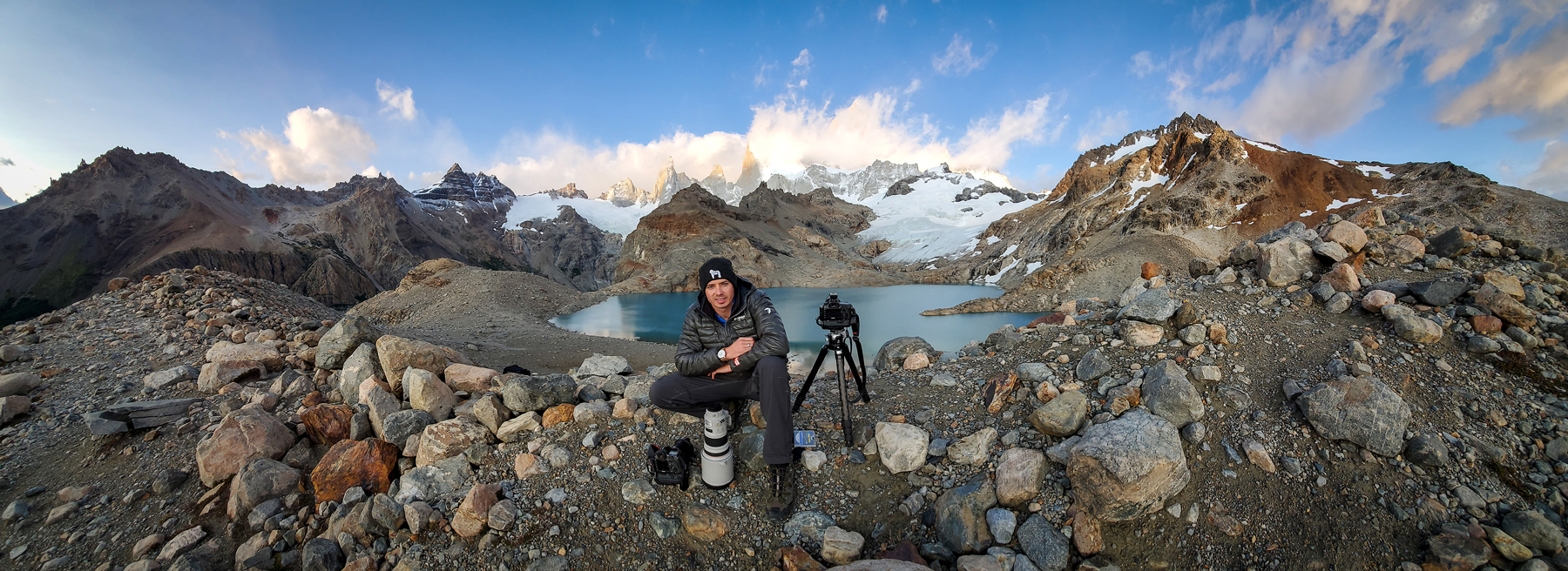
Hello! I'm Derek.
DEREK NIELSEN PHOTOGRAPHY RAISES AWARENESS ABOUT THE GLOBAL NEED FOR CONSERVATION THROUGH PHOTOGRAPHY AND DONATES UP TO 15% OF ALL SALES BACK TO ENVIRONMENTAL ORGANIZATIONS AROUND THE WORLD.
